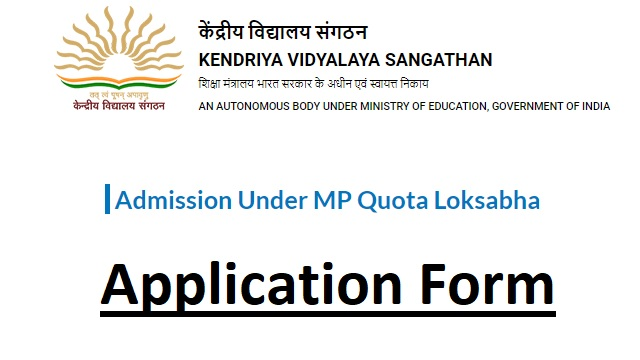Description

Copyright infringement is not intended
Context: The Union Education Minister had urged the Lok Sabha to collectively debate and decide about the MP quota in Kendriya Vidyalaya admissions.
Details
- The Union Education Minister Dharmendra Pradhan had urged the Lok Sabha to collectively debate and decide whether the MP quota in Kendriya Vidyalaya admissions should continue or be scrapped.
‘
About Kendriya Vidyalaya
- Earlier known as ‘Central Schools’, these are institutions administered and run by the Ministry of Education (MoE).
- They were started in 1963 on the recommendation of the Second Central Pay Commission for the children of transferable Central government employees, including Defence and paramilitary personnel.
- The objective was to ensure that the education of these children does not get hampered on account of frequent transfer of their parents.
- Currently, there are about 1,200 KVs in the country.
About MP quota in KV admissions
- The Kendriya Vidyalaya Sangathan (KVS), the autonomous body under MoE that manages the schools, introduced a special scheme in 1975 allowing a fixed quota of admissions to each member of the Lok Sabha and Rajya Sabha.
- This was a means to give more discretionary powers to MPs to help them serve their constituents in a better way.
- An MP can refer students for admission against this quota, but these recommendations are limited from Classes 1 to 9, and children whose parents belong to the member’s constituency.
- The MP quota has undergone several changes;
- Earlier, an MP could recommend two admissions in an academic year, which was increased to 5 in 2011, 6 in 2012, and 10 in 2016.
- Currently, with 543 MPs in the Lok Sabha and 245 in the Rajya Sabha, 7,880 admissions are possible against this quota every year.
- The MP quota was first scrapped in 1997 but reintroduced soon after in 1998.
- In 2010, the then HRD Minister had suspended the quotas. However, due to political pressure, they not only reinstated the MP quota, but also increased the size in 2011 and 2012.
- In 2016, The Government also increased the size of the MP quota to 10 admissions each year.
How the MP quota system work
- Every MP sends a coupon to the KVS and MoE from his/her office with details of the child and parents, such as a postal address, phone number, and email address.
- The list of shortlisted candidates is put up on the KVS website.
- After a student’s name appears on the list, the formal admission process begins.
- Students or their parents have to take a print-out of the coupon with other relevant documents, such as birth certificates, address proofs; transfer certificates, etc., and submit them to the school.
Why Governments want to scrap the MP quotas?
- Over the years, admissions have often exceeded the quota size since MPs and Ministers receive several requests, many of which, they claim, are hard to turn down. For instance, in 2018-19, 8,164 students were admitted against the sanctioned strength of 7,880 and 9,402 students were taken in against the Education Minister’s quota of 450.
- Governments have argued that the excess admissions distort the student-teacher ratio in these schools and deprive meritorious students of an opportunity to study in a Kendriya Vidyalaya.
https://indianexpress.com/article/explained/explained-dharmendra-pradhan-mp-quota-kendriya-vidyalaya-7838453/















